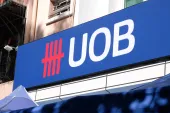
Will interbank rates in China remain stubbornly high in 2H13?
Find out what BBVA, Barclays, and S&P have to say.
We recently reported that analysts expect the tight liquidity in China to finally ease after PBoC's statement in June. Interbank rates, however, were predicted by Barclays to stay higher in 2H13 vs 1H13. Standard & Poor's Qiang Liao concurs and projects interbank rates to be higher but most likely below 3%.
BBVA's Alicia García-Herrero, meanwhile, said that while China's liquidity cruch was unexpected and disruptive, it was also short-lived and reckons this does not pose a systemic risk.
Asian Banking and Finance asked these analysts on China's tight liquidity and here's what they have to say:
BBVA: Alicia García-Herrero, Chief Economist for Emerging Markets
China’s money market crunch was as unexpected as disruptive. Fortunately, though, it was also short-lived. Short-term interbank rates has decreased and interest rate levels have declined to around 5% off the double-digit highs of last week.
The question now is which banks are likely to feel the brunt of the PBoC’s tighter liquidity policy, aimed at curbing the growth of shadow bank and other risky lending practices. In the same vein, it seems important to understand whether tighter liquidity pose broader risks to the financial system.
On the first question, small- and medium-sized banks (SMBs) are clearly more vulnerable to the liquidity squeeze as they have typically had difficulty in attracting deposits due in large part to the deposit rate cap. They, therefore, tend to rely on the interbank market as a source of funding. In contrast, the largest 5 banks have surplus liquidity and tend to be structural lenders in the interbank market.
There is, however, some banks having grown very fast in the last few years - and, thus, no longer small – which do not have a large and stable deposit base and have therefore relied quite substantially on the money market. For example, China Industrial Bank (CIB) and China Minsheng Bank (CMBC), ranked seventh and ninth in the banking system by total assets, respectively, fund 24% of their assets through the interbank market, compared to only 3-4% for other listed banks.
On the second question, given China’s banking system still high concentration on the four state-owned banks as well as the policy banks which are long in liquidity, the situation does not seem to pose a systemic risk. Nevertheless, some of the banks may be big enough to generate ripple effects on the broader financial system.
In any event, based on the PBoC’s statement a few days ago, we expect the central bank to relax its restrictive policy in order to prevent banks, even small ones, from encountering severe liquidity problems that could otherwise undermine financial system stability.
Standard & Poor's: Qiang Liao, Director, Financial Services Ratings
It’s mainly due to the central bank’s intentional policy stance. Since Chinese banks have strong liquidity per se, the interbank liquidity has been substantially eased since July 1 after PBOC somewhat fine-tuned its policy stance and the banks started to adjust their asset portfolio.
This trend is in line with our expectation. We believe the weighted average of interbank rates in the second half to be higher than in the first four months of this year, but most likely below 3%.
Barclays: May Yan, Head of Banks Sector, Asia Ex-Japan Equity Research
Specific drivers for the recent tightness, according to views expressed in our meetings, are: FX inflows declining more than expected, the crackdown on “fake” trading, bond market regulation, CBRC’s #8 document, the PBOC halting trading between banks’ proprietary trading accounts and WMP accounts, and delivery vs. paymentregulations.
The regulators we met with were of the view that a change of division head at PBOC may have affected the central bank’s style of handling monetary policy implementation. Banks were surprised to see the PBOC suddenly refuse to inject liquidity as it had always previously, therefore it seems that banks became afraid to lend to each other on uncertain liquidity trends.
We expect the liquidity tightness to ease after the PBOC’s 25 June statement affirming its support for market liquidity. However, we expect interbank funding costs will stay higher in 2H vs 1H, as banks may still be unwilling to lend to each other. In fact, the regulators and banks we spoke with share the view that rates may not go back to pre-shock levels any time soon.


















 Advertise
Advertise








